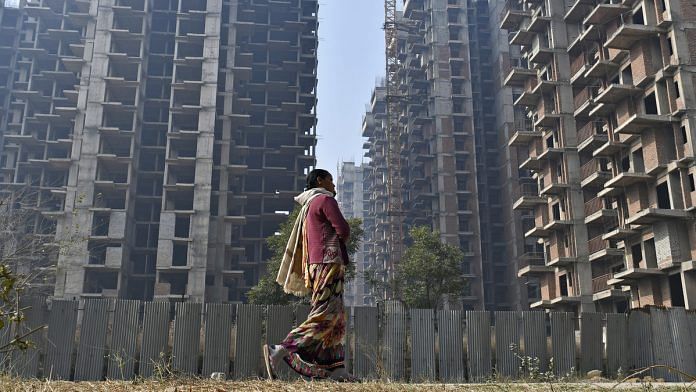New Delhi: Looking to avert another liquidity crisis as signs of stress start to show among the housing finance companies, the Modi government has included the National Housing Bank (NHB) in the Financial Stability and Development Council (FSDC).
A senior government official told ThePrint that NHB’s inclusion into FSDC “came into effect in April”.
The move coincided with the transfer of ownership of NHB from the Reserve Bank of India (RBI) to the Indian government, notified on 29 April, said the official who didn’t wish to be named.
The inclusion of the regulator for housing finance firms into FSDC will enable better information sharing among regulators, especially with most of the large financial conglomerates having financial interests across sectors like banking, insurance, mutual funds and housing finance.
The move also comes as a recognition of the close linkages of the housing finance companies with the financial markets and the need for close coordination and information sharing among regulators to avoid another liquidity crisis that could have a contagion effect on financial markets.
FSDC, a platform for financial sector regulators to come together for greater inter-regulatory coordination, was set up in 2010. Chaired by the Union finance minister, the members of the council include the heads of RBI, Insurance Regulatory and Development Authority of India, Securities and Exchange Board of India and Pension Fund Regulatory and Development Authority.
“Housing finance is a sensitive sector despite mainly dealing in secured assets. Any defaults by the housing finance companies can trigger a domino effect,” said the official.
“With many companies having interests across various financial services sectors, the need for information sharing among regulators has increased,” the official added.
Also read: Why political meddling with central banks, like in India, is a terrible idea
‘Crucial next few months’
Signs of stress among housing finance firms are already visible. Reliance Home Finance’s long-term debt was downgraded to default in the last week of April by a few rating agencies.
Then PNB Housing Finance’s debt was placed on a credit watch by Care Ratings for its increasing share of corporate loan and the consequent vulnerability arising out of weakness in real estate sector.
In its comments, Care Ratings warned that “weakness in credit profile of builder/corporate loans of HFCs, rising competition and the resultant possible dilution in credit underwriting norms, and long-term funding are the key challenges for the sector”.
Last week, Uday Kotak, managing director and chief executive of Kotak Mahindra Bank, also warned that the next six months may be crucial for the financial services sector.
“We are in the midst of one of the significant challenges in the financial sector and I think the next few months are crucial in the sense how the financial sector shapes up across various segments. This is the time when the quality of the balance sheet of financial players gets very crucial,” he said.
Kotak pointed out that the IL&FS crisis was an early warning signal of the stress faced by a few firms.
The trouble at IL&FS came to the fore in August 2018 after one of its group companies defaulted on debt payments, triggering a systemic liquidity crisis. With the imminent threat of a system-wide impact in case of further IL&FS default, the government stepped in to remove the company’s management and appoint a new board. IL&FS was said to be overly leveraged with over Rs 57,000 crore of the Rs-90,000 crore exposure to state-owned banks and financial institutions.
‘Value of houses down’
Dewan Housing Finance Ltd (DHFL), a housing finance firm, bore the brunt of the liquidity crisis triggered by the IL&FS default. This, despite the fact that it was among the few deposit-taking housing finance companies in the country, giving it access to its own source of funds.
DHFL’s stock was one of the worst hit in the aftermath of the IL&FS crisis, after a mutual fund sold one of the firm’s debt papers at a yield much higher than the existing price, triggering speculation about the financial situation of the company.
In its weekly liquidity report dated 30 April, Care Ratings flagged that the average liquidity deficit in the banking system had widened to a 9-week high of Rs 1.18 lakh crore in the week ended 26 April.
“There has been a sustained increase in the liquidity deficit in the banking system since early April 2019. The continued higher credit off-take and lower growth in bank deposits has been one of the factors constraining liquidity on a sustained basis since September 2018,” the report said.
National Council of Applied Economic Research’s former director general S.L. Rao said non-banking finance companies have got into trouble as banks are reluctant to lend them funds.
“Housing finance companies have faced major problems since demonetisation as their clients are both home buyers and real estate firms. Black money dealings in real estate have come down reducing the value of the houses,” said Rao.
Also read: NBFC crisis is over but problem remains, says HDFC Bank chief Aditya Puri



